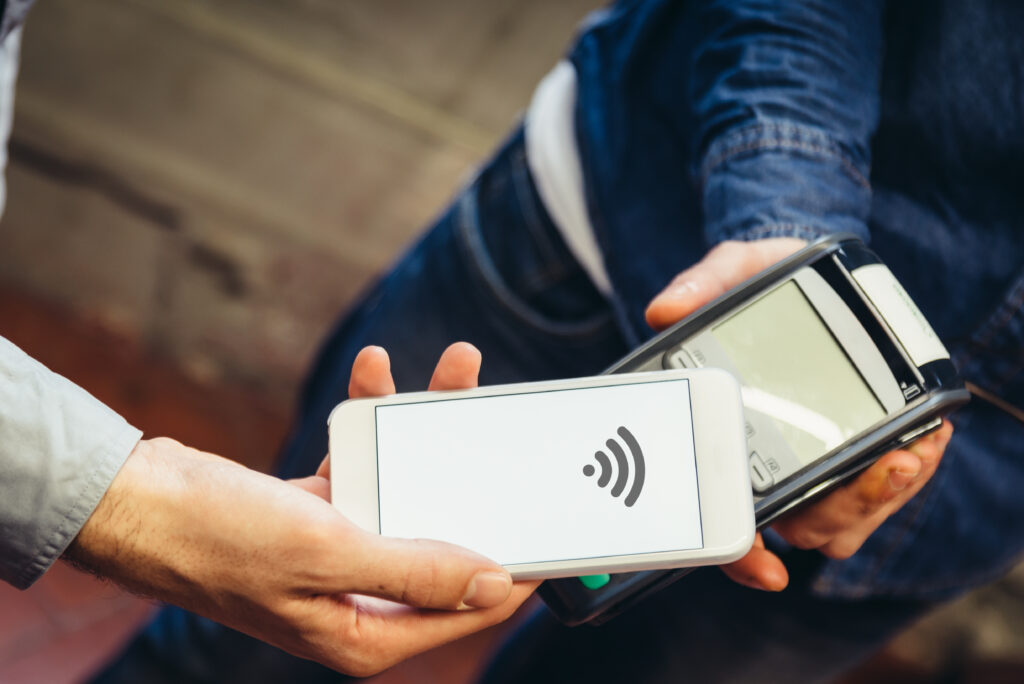Mobile Contactless Payments
Introducing Mobile Contactless Payments in the United States
Using your cell phone as a primary method to make mobile contactless payments may finally become a reality in the U.S. AT&T and Verizon are indeed encroaching into the electronic payment space, possibly creating a real threat to Visa and MasterCard. According to Bloomberg, the two wireless carriers have created a new venture with Deutsche Telekom AG, a unit of T-Mobile.

The partnership is working with Discover and Barclay’s to test their mobile contactless payments system in four U.S. cities. All payments would be processed through Discover’s network, which is currently fourth in the card market behind Visa, MasterCard, and American Express.
In 2008, Juniper Research forecasted that mobile payments would reach $600 billion globally by 2013. Mobile contactless payments have been in place in other countries (Korea, Japan, Spain) for some time and the demand in the U.S. has been increasing, especially with the growth of the smartphone market. Discover has been trying to increase their market share using reward programs and partnerships, so what better way than to jump on the mobile payment wave? Joining the leading wireless carrier and cell phone provider partnership is a smart move.
About the Technology
Contactless payments have actually been around for a while. Introduced with Mobile (Exxon)’s Speedpass in 1997, the technology has only recently evolved and become more popular for several reasons. Consumers want faster ways to conduct face-to-face transactions. People are constantly on the move and standing in any line to make a purchase is considered an inconvenience. There have been recent advances in Near Field Communications (NFC) technology, a more secure payment method for mobile devices. (Basic RFID was used in the previous contactless cards and devices.) Merchants are trying to find ways to circumvent interchange and association fees from Visa and MasterCard. (Merchants persuaded Congress recently to approve a cap on interchange fees. An antitrust lawsuit filed in 2005 is still pending.)
To enable mobile payments, the mobile phone is equipped with a smartcard which contains payment card data. Merchants would need to have a compatible payment card reader and, to help prevent fraud, a PIN would be required to complete a transaction. For merchants already accepting mobile contactless payments, most existing readers are supposedly compatible with NFC devices.
The Faster, Faster Checkout
Some retailers have already instituted Visa’s No Signature Required program and MasterCard’s Quick Payment Service, both of which do not require signatures for swiped credit card purchases ranging up to $50 at certain merchant categories. Skeptics claim that this business practice can increase fraud, since a cardholder signature is used as proof of purchase at a brick and mortar merchant and most fraudulent transactions start out in small amounts. Gas stations have long employed this practice, but usually require a billing zip code for fraud prevention. In this case, a PIN is not enough protection for one group of consumer advocates. Each country has its own set of government regulations with regards to mobile payments and consumer protection. Nothing currently exists in the U.S.
Recently, Consumers Union, the nonprofit publisher of Consumer Reports, has requested that regulators “use their current statutory authority to ensure that existing consumer protections are applied to all new payment methods.” They are also asking that companies providing the payment systems provide consumer rights in their contracts for “zero liability” to the cardholder. With the current government administration’s involvement in financial matters, a lot more work may need to be done before this becomes reality.
Sharing Revenue
One challenge with this new payment channel involves basic business. Right now, the major card networks, issuing banks, and payment processors earn the bulk of the revenue from card transactions. Contactless payments using mobile phones introduces new players – wireless carriers, phone manufacturers, and application providers. Why wouldn’t the players enabling the mobile payments want some of the transaction revenue?
The Privacy Issue
Retailers and consumers both like the idea of mobile payments when it comes to faster checkouts. However, they may differ on the amount of information shared. Retailers would love to gather more information about their customer and the transfer of CRM data wirelessly is the easiest way to do that. Consumers however, may not want to share anything else about themselves. Mobile payment applications could limit the amount of data stored, or allow the customer to control what data they want to share, such as loyalty card information and purchase history.
With fraud being a common concern amongst consumers, it still may be a while before mobile payments using NFC really take off. Sure, there will be the early adopters and people who are tapped to do trials (Discover used employees last year to trial its mobile contactless sticker where Discover Zip payments were accepted). Adoption requires all the pieces be in place – consumers with Discover accounts who are also using mobile phones equipped with the NFC payment technology and merchants who have the equipment and capability to accept contactless payments from Discover.
Contact Us Today about all your mobile contactless payment needs
One thought on “Mobile Contactless Payments”